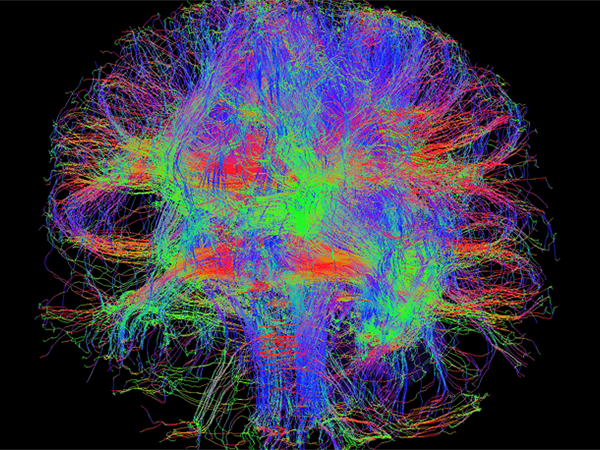Multimodal 7T MR Imaging Study Reveals Connections Critical to Human Consciousness
Images

A group of researchers at Massachusetts General Hospital, a founding member of the Mass General Brigham healthcare system, and Boston Children’s Hospital, have created a connectivity map of a brain network that they propose is critical to human consciousness. The paper, “Multimodal MRI reveals brainstem connections that sustain wakefulness in human consciousness,” was published in Science Translational Medicine.
The study involved high-resolution scans that enabled the researchers to visualize brain connections at submillimeter spatial resolution. This technical advance allowed them to identify previously unseen pathways connecting the brainstem, thalamus, hypothalamus, basal forebrain, and cerebral cortex.
Together, these pathways form a “default ascending arousal network” that sustains wakefulness in the resting, conscious human brain. The concept of a “default” network is based on the idea that specific networks within the brain are most functionally active when the brain is in a resting state of consciousness. In contrast, other networks are more active when the brain is performing goal-directed tasks.
To investigate the functional properties of this default brain network, the researchers analyzed 7 Tesla resting-state functional MRI data from the Human Connectome Project. These analyses revealed functional connections between the subcortical default ascending arousal network and the cortical default mode network, contributing to self-awareness in the resting, conscious brain.
The complementary structural and functional connectivity maps provide a neuroanatomic basis for integrating arousal and awareness in human consciousness. The researchers released the MRI data, brain mapping methods, and a new Harvard Ascending Arousal Network Atlas to support future efforts to map the connectivity of human consciousness.
“Our goal was to map a human brain network that is critical to consciousness and to provide clinicians with better tools to detect, predict, and promote recovery of consciousness in patients with severe brain injuries,” explains lead-author Brian Edlow, MD, co-director of Mass General Neuroscience, associate director of the Center for Neurotechnology and Neurorecovery (CNTR) at Mass General, an associate professor of Neurology at Harvard Medical School and a Chen Institute MGH Research Scholar 2023-2028.
From the standpoint of future treatments in patients with severe brain injuries, the researchers showed that a dopamine-producing region in the brainstem, the ventral tegmental area, is a connectivity hub that links the subcortical default ascending arousal network to the cortical default mode network.
Dr Edlow explains, “Our connectivity results suggest that stimulation of the ventral tegmental area’s dopaminergic pathways has the potential to help patients recover from coma because this hub node is connected to so many regions of the brain that are critical to consciousness.”
Senior author Hannah Kinney, MD, Professor Emerita at Boston Children’s Hospital and Harvard Medical School, adds that “the human brain connections that we identified can be used as a roadmap to better understand a broad range of neurological disorders associated with altered consciousness, from coma, to seizures, to sudden infant death syndrome (SIDS).”
The authors are currently conducting clinical trials to stimulate the default ascending arousal network in patients with coma after traumatic brain injury, with the goal of reactivating the network and restoring consciousness.